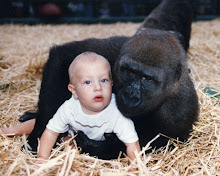European astronomers have discovered 50 new planets beyond our solar system,including 16 which are a similar size to Earth. Including "Gliese 370" is a solitary, orange, main sequence (K5 V) star located thirty-six light-years away, in the constellation Vela. This is the largest number of such planets ever announced at one time. The biggest planet of the new batch is HD 85512 b, which is 3.6 times the mass of Earth and can be found 36 light-years away in the Vela constellation.The findings suggest that more than half of the stars like our sun possess planets, and that many of those worlds are lighter than Saturn.HD 85512 b is the only one of new planets, dubbed 'super-Earths' that is located in its star system's habitable zone.

That's the area around a star where scientists believe water could exist, in liquid form, making a planet potentially habitable.The new findings are being presented at a conference on Extreme Solar Systems in Wyoming, U.S., where 350 exoplanet experts are meeting.This discovery was made by The High Accuracy Radial Velocity Planet Searcher (HARPS), which is installed at the European Southern Observatory's 11.8ft La Silla Observatory in Chile.'The detection of HD 85512 b is far from the limit of HARPS, and demonstrates the possibility of discovering other super-Earths in the habitable zones around stars similar to the sun,' said University of Geneva astronomer Michel Mayor.Super-Earths, which range from Earth's mass to worlds 10 times more massive, are of particular interest to planet-hunters because it's thought that they could be even more conducive to the development of life than our own planet.

One of the team members, Lisa Kaltenegger, of the Max Planck Institute for Astronomy and the Harvard Smithsonian Centre for Astrophysics, said the latest round of findings marked a new age in the search for habitable planets.'We are actually entering an incredibly interesting time in our history,' she said.When the search for extrasolar planets began more than 15 years ago, the telescopes used for the task could only detect giant planets like our own solar system's Jupiter. Since then, the techniques and tools used for the search have become much more sensitive. HARPS can detect the slight gravitational wobble caused by planets as small as Earth, if they have incredibly close-in orbits. HARPS' observations of 376 sun like stars has led the team to conclude not only that more than half of such stars are surrounded by planets, but also that about 40 per cent of them have at least one planet less massive than Saturn.
 I hope to touch on varied topics such as complex programming inside and outside carbon cellular fabrication expansion annalist reporting in short I hope to make my own design of fly functions without cerebral cortex of eyes. All this movement is done with distance over time giving it speed analogy innate ability to “construct its carbon bonds”. In all I hope to bring a little piece of art.
I hope to touch on varied topics such as complex programming inside and outside carbon cellular fabrication expansion annalist reporting in short I hope to make my own design of fly functions without cerebral cortex of eyes. All this movement is done with distance over time giving it speed analogy innate ability to “construct its carbon bonds”. In all I hope to bring a little piece of art. The maths arrangement isn’t correct but the fly constructive carbons are linked to a genetic code not underlined as this paper is extensive this is only a part post from art club view. The two equations that will feature in art view blog first is the neutron with its molecular bonding and the second is space motion continuum making it easier to wrought a trajectory path true space in reverse called a "quantify leap" true space. I also hope to bring forward the innate language concept of communication. This is done on a primal level this exists in youth. Touch on is more transgressive learning and the planets pollution, Human coexistence with pollution cell count in copulation Human ability to reside within a newer genetic code of the "Now Human".
The maths arrangement isn’t correct but the fly constructive carbons are linked to a genetic code not underlined as this paper is extensive this is only a part post from art club view. The two equations that will feature in art view blog first is the neutron with its molecular bonding and the second is space motion continuum making it easier to wrought a trajectory path true space in reverse called a "quantify leap" true space. I also hope to bring forward the innate language concept of communication. This is done on a primal level this exists in youth. Touch on is more transgressive learning and the planets pollution, Human coexistence with pollution cell count in copulation Human ability to reside within a newer genetic code of the "Now Human".





